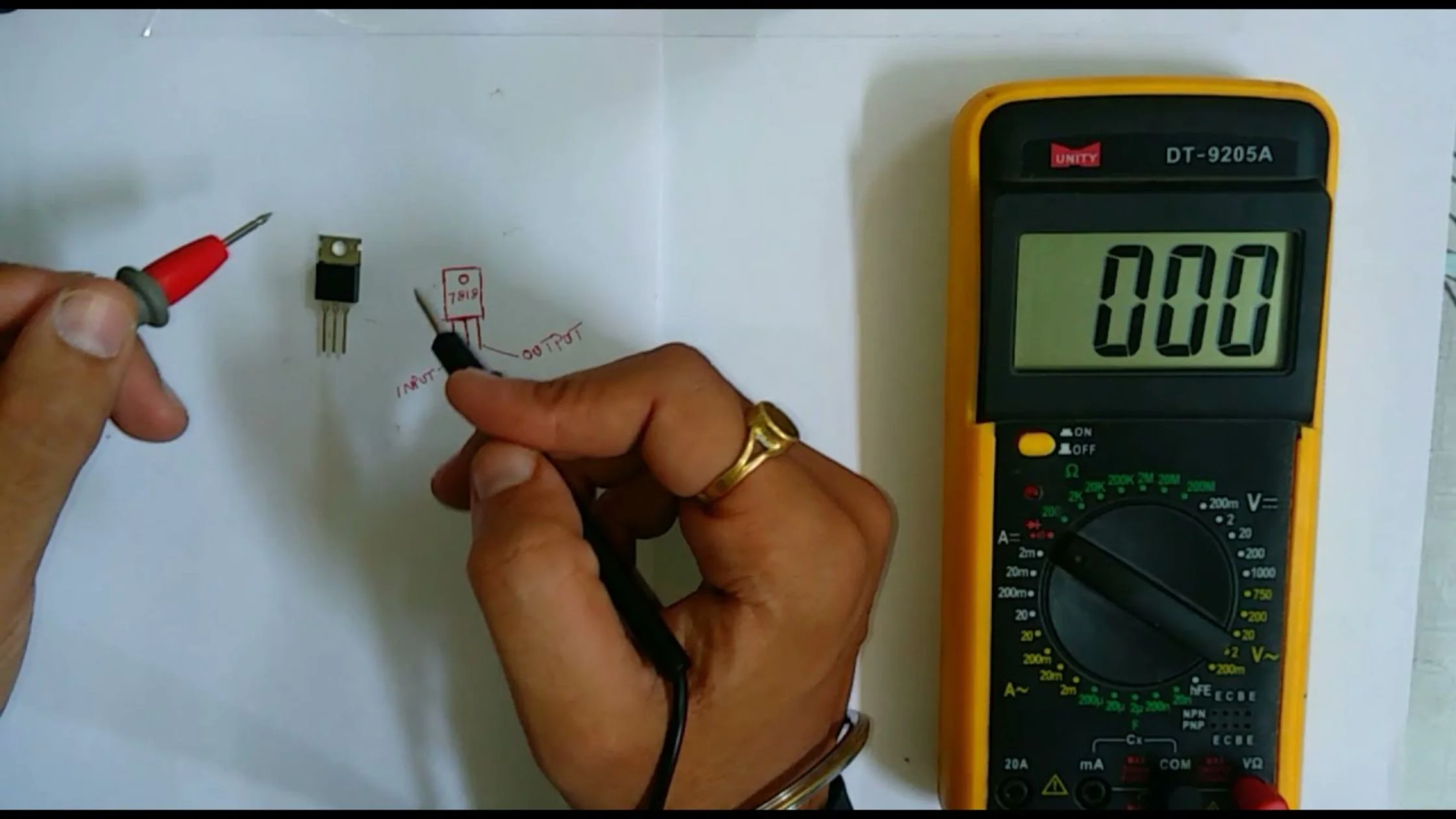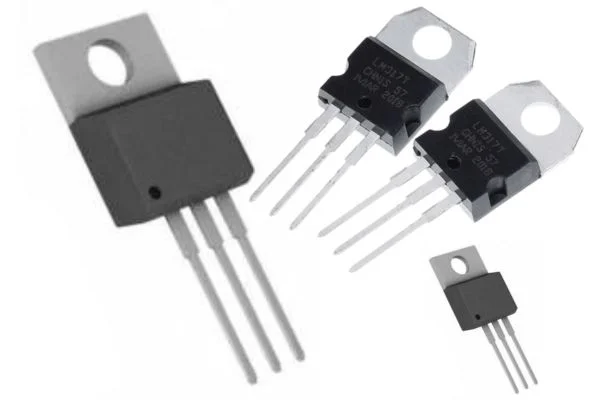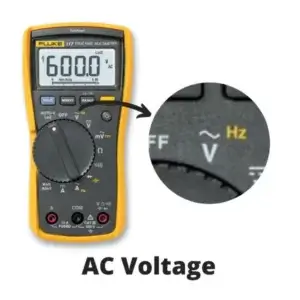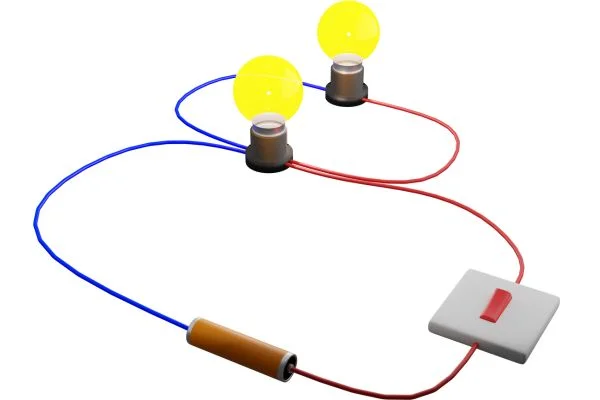Voltage regulators are crucial in maintaining a stable and consistent voltage supply in electronic circuits and power systems. Testing a voltage regulator is essential to verify its performance and troubleshoot potential issues. You should learn the answer to “how to test a voltage regulator with a multimeter?”
The tractor voltage regulator, is also called the alternator voltage regulator. It provides a steady and reliable voltage to your tractor’s battery and other electrical components. You should check voltage regulator is essential for this reason. Additionally, you can test a lawn mower’s voltage regulator with a multimeter.
What Is A Voltage Regulator?
A voltage regulator is an electronic component or circuit that maintains a stable output voltage irrespective of variations in input voltage or load conditions. It ensures that electronic devices receive a constant and reliable power supply, which is crucial for proper operation. Voltage regulators are commonly used in various applications, including power supplies, automotive systems, and consumer electronics.

Why Test A Voltage Regulator?
Testing a voltage regulator is essential for several reasons:
Verification of Proper Functionality: Regular testing ensures the voltage regulator performs within its specified parameters, preventing voltage fluctuations that could damage connected devices.
Identification of Faulty Regulators: Testing helps identify faulty or malfunctioning voltage regulators, allowing for timely replacement and preventing potential damage to other components.
Troubleshooting: When an electrical system experiences voltage-related issues, you should test the voltage regulator. It is an essential step in diagnosing and resolving the problem.
When & How To Test A Voltage Regulator?
You should consider to test a voltage regulator under the following circumstances:

During Routine Maintenance: Periodic testing is a part of routine maintenance. It helps ensure the continued reliability of the electrical system.
When Voltage Issues Occur: If you observe voltage fluctuations or inconsistencies in an electronic system, then you should test the voltage regulator. It can help pinpoint the problem.
Before and After Repairs: Before making any repairs or component replacements in an electrical system, you have to test the voltage regulator. It can help identify whether it plays a role in the issue.
Types Of Voltage Regulators
Voltage regulators come in various types, each with its characteristics and applications. The two primary categories of voltage regulators are linear voltage regulators and switching voltage regulators.

1. Linear Voltage Regulators
Linear voltage regulators use a simple method to regulate voltage. They dissipate excess energy as heat to maintain a constant output voltage. Key features of linear voltage regulators include:
- Simplicity: Linear regulators are easy to design and implement.
- Low noise: They provide relatively low output voltage noise.
- Limited efficiency: The linear regulators are less energy-efficient due to heat dissipation.
2. Switching Voltage Regulators
Switching voltage regulators use a more complex switching process to regulate voltage efficiently. They store and transfer energy to maintain a constant output voltage, minimizing heat dissipation. Key features of switching voltage regulators include:
- High efficiency: The switching regulators are more energy-efficient than linear regulators.
- Compact size: They are often smaller and more compact.
- Increased complexity: Designing and implementing switching regulators can be more challenging.
The choice between linear and switching voltage regulators depends on the specific requirements of the application, including efficiency, size, and cost considerations.
How To Test A Voltage Regulator With A Multimeter | Step By Step Guide
Testing a voltage regulator with a multimeter involves several steps to assess its input and output voltages. So, how to test a voltage regulator with a multimeter? Here is a step-by-step guide to perform this test:
Step 1: Set the Multimeter to Voltage

Begin by turning on your multimeter and selecting the voltage measurement mode. Ensure that the multimeter is set to measure DC voltage if you are testing a DC voltage regulator or AC voltage for an AC voltage regulator. Set the voltage range to a level that encompasses the expected output voltage of the regulator. The multimeter should show 12V.
Step 2: Connect the Multimeter to the Voltage Regulator
Next, connect the multimeter probes to the voltage regulator. Ensure that the red probe is connected to the regulator’s output terminal (usually labeled “OUT” or “+”) and the black probe is connected to the common (COM) terminal.
Step 3: Measure the Voltage
Measure the input voltage supplied to the voltage regulator. To do this, connect the probes to the input terminals of the regulator (usually labeled “IN” or “+IN” and “-IN”). Record the input voltage reading displayed on the multimeter.

Measure the output voltage produced by the voltage regulator. Connect the probes to the output terminals of the regulator (usually labeled “OUT” or “+OUT” and “-OUT”). Record the output voltage reading displayed on the multimeter. Accelerate the engine to 1500-2000 RPM and check the voltage (13.8V – 14.5V).
Step 4: Compare the Voltages
Compare the input and output voltage readings obtained from the multimeter. The output voltage should closely match the specified output voltage of the voltage regulator, given normal operating conditions.
If the output voltage significantly deviates from the expected value, it indicates a problem with the voltage regulator. Or, if the voltage drops below 13.8V, that is an indication of a weak battery. If the voltage is above 14.5V, there is a high voltage leakage fault.
Troubleshooting Voltage Regulators
Troubleshooting voltage regulators involves identifying and addressing common problems affecting their performance. Here are some common issues with voltage regulators and steps to address them:
Common Problems with Voltage Regulator

- Overheating: Excessive heat can cause voltage regulators to malfunction. Ensure that the regulator is adequately cooled, and consider using a heat sink if necessary.
- Voltage Drift: Voltage regulators may experience voltage drift over time. Calibration or replacement may be required to address this issue.
- Output Voltage Fluctuations: The fluctuations in the output voltage can result from external factors such as input voltage variations or load changes. Ensure stable input conditions and check for loose connections.
- Short Circuits: Short circuits or overloads on the output can damage voltage regulators. Check for short circuits in the connected circuitry and address them promptly.
How to Fix Common Problems with Voltage Regulators
- Overheating Prevention: To prevent overheating, ensure the voltage regulator is adequately rated for the load it is powering. Proper ventilation and heat sinks can also help the heat to dissipate effectively.
- Calibration: Some voltage regulators may allow for calibration to correct voltage drift. Consult the regulator’s datasheet or manufacturer’s instructions for calibration procedures.
- Stabilizing Input Conditions: Address fluctuations in the input voltage by using additional filtering or voltage conditioning components.
- Short Circuit Protection: Use fuses or circuit breakers to protect voltage regulators from short circuits or overloads. Ensure that the load does not exceed the regulator’s specified limits. Now you know the answer – how to test a voltage regulator with a multimeter?
Safety Tips
- When working with electrical circuits and voltage regulators, prioritize safety by turning off power sources and disconnecting circuits as needed.
- Check your multimeter is set to the correct voltage measurement mode and range before testing.
- Know potential hazards such as overheating and short circuits, and take appropriate precautions.
- If you are unsure about testing or troubleshooting voltage regulators, consult a qualified technician or engineer.
Testing Voltage Regulators In Different Types Of Circuits
Voltage regulators are integral components in various types of circuits, each with unique requirements and challenges. Testing voltage regulators in different circuit configurations may necessitate tailored approaches to ensure accurate assessment. Here, we explore testing procedures and considerations for voltage regulators in three common types of circuits:

1. Power Supply Circuits
Application: Voltage regulators in power supply circuits provide a stable and reliable voltage to electronic devices and components.
Circuits Testing Considerations:
- Load Testing: Evaluate the regulator’s performance under different load conditions. Gradually increase the load to simulate real-world scenarios and ensure the output voltage remains within the specified range.
- Ripple Voltage: Measure and analyze the ripple voltage on the output of the voltage regulator. Low ripple levels are essential for powering sensitive electronics.
2. Automotive Voltage Regulators
Application: Automotive voltage regulators regulate the voltage supplied to various electrical components in vehicles, including the battery and charging system.
Automotive Testing Considerations:
- Vehicle-Specific Procedures: Consult the vehicle’s service manual for specific testing procedures and voltage regulator locations. Automotive voltage regulators may be integrated into the alternator or engine control unit (ECU).
- Load Testing: Simulate different driving conditions to assess the regulator’s ability. It is to maintain a stable voltage output while the vehicle is in motion.
3. Electronic Devices and Circuits
Application: Voltage regulators in electronic devices and circuits ensure that integrated circuits and components receive a consistent voltage supply.
Devices Testing Considerations:
- Load Variation: Vary the load on the regulator to mimic changing demands within electronic devices. You have to verify that the output voltage remains stable during load fluctuations.
- Noise and Interference: Some sensitive electronic applications, such as audio equipment, assess the regulator’s performance. Especially, regarding output noise and electromagnetic interference (EMI). It measures and analyze noise levels using an oscilloscope or specialized equipment.
Testing Voltage Regulators Under Load
Testing voltage regulators is a critical step in assessing their real-world performance. It means evaluating how a regulator maintains a stable output voltage while accommodating fluctuations in current demand. Under load, voltage regulators may face transient conditions, and their ability to respond effectively is paramount. Here’s how to test voltage regulators under load:

Step 1. Load Testing Setup
- Connect the voltage regulator to a load resistor or device that simulates the typical load conditions the regulator encounters in its application.
- Gradually increase the load current, simulating a range of operating conditions. Monitor the output voltage with a multimeter or oscilloscope as the load varies.
Step 2. Stability Assessment
- Observe how the voltage regulator responds to load changes. It should maintain a stable output voltage within its specified tolerance. And even during load variations.
- Note any transient responses, such as overshoot or undershoot. These issues may occur when the load changes suddenly. Transients should be minimal and quickly return to the desired output voltage.
Step 3. Voltage Drop Analysis
- Measure the voltage drop across the voltage regulator as the load current increases. A well-designed voltage regulator will exhibit minimal voltage drop, ensuring the output voltage remains close to the desired value.
- Compare the voltage drop under different load conditions to ensure it remains within acceptable limits.
Conclusion
Testing a voltage regulator with a multimeter is a valuable skill for maintaining electrical systems and troubleshooting voltage-related issues. Following the steps outlined in this guide, you can assess the performance of voltage regulators. Also, you can identify problems, and take appropriate measures to ensure a stable and reliable power supply. I hope now you know “how to test a voltage regulator with a multimeter?”
